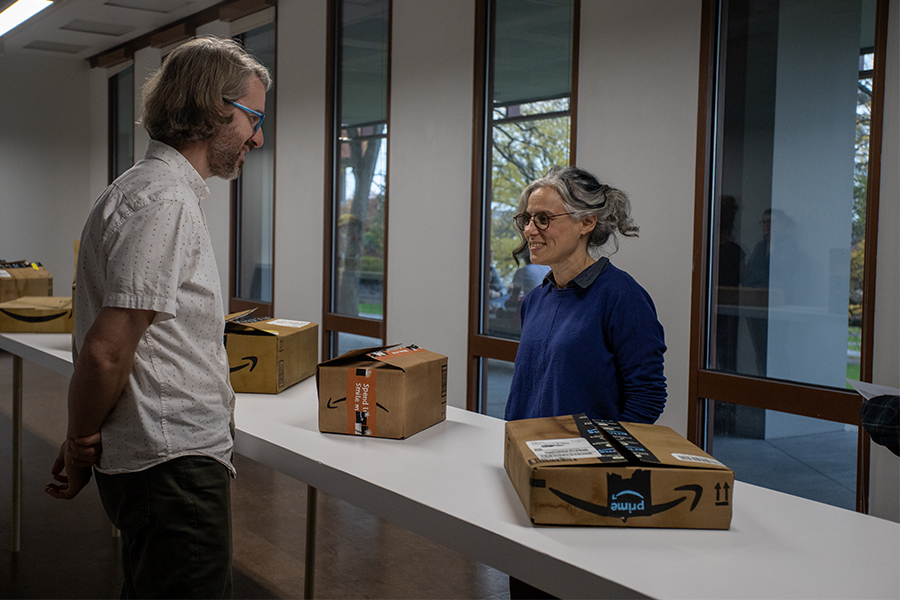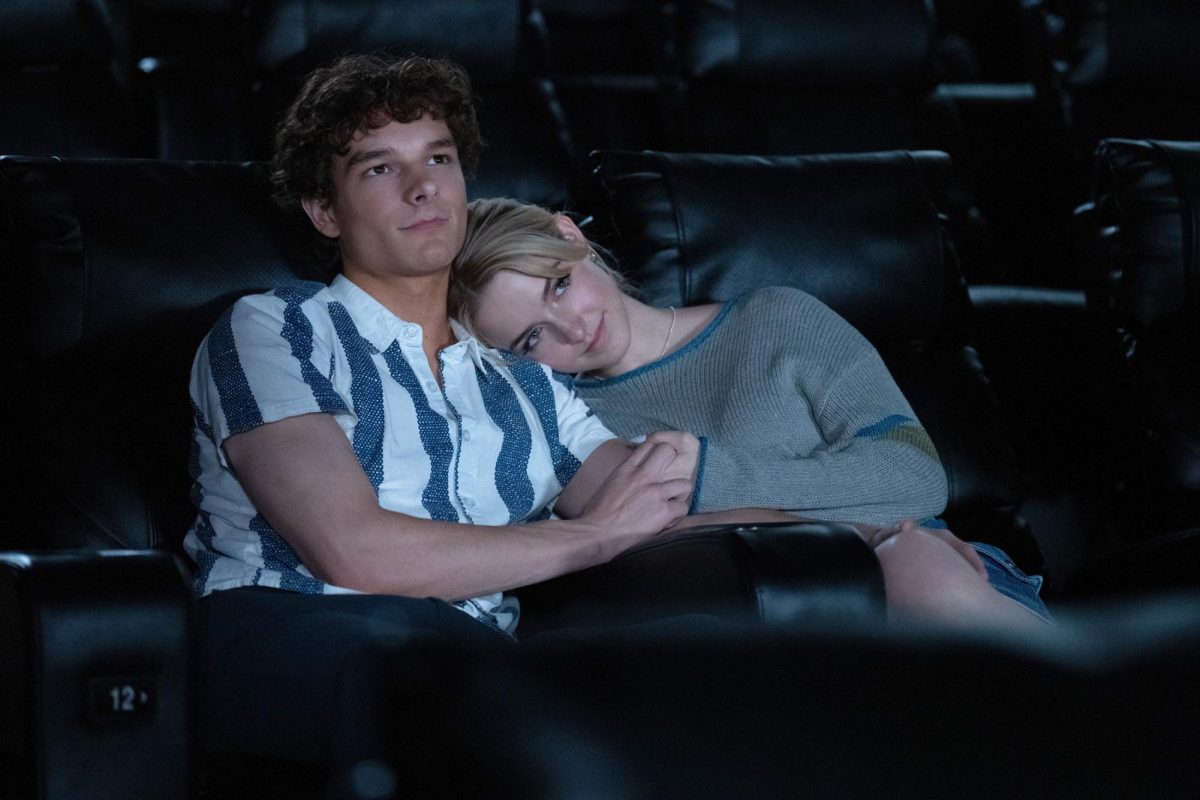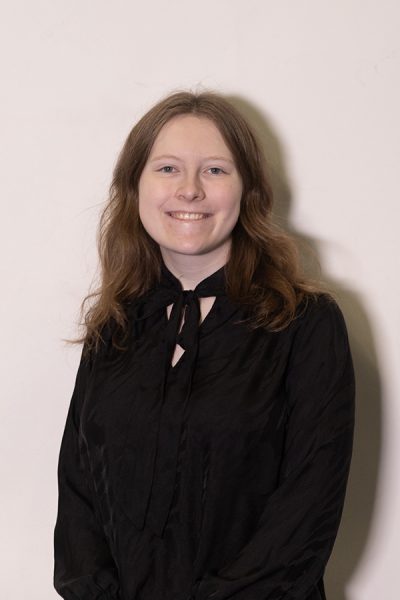On Oct. 26, the Handwerker Gallery had an opening reception for two new exhibitions by artists Wang Chen and Joan Linder. The two exhibitions were widely different, however still managed to captivate and catch the eyes of all those in attendance.
Joan Linder is a professor of art at the University at Buffalo, and has had her exhibitions displayed at venues like The Buffalo AKG Museum, the Davis Museum and the Museum of Fine Arts Boston. She has also made permanent floral drawing commissions for the Metropolitan Transit Authority in the 71 St. station, the PS 97 Highlawn School and the University at Buffalo SUNY. Her work has been mentioned in the New York Times, Art News and in the Art in America magazine.
Linder’s exhibition titled “PRIME” features a series of sculptures made with pen, bottled ink, paint and watercolor paper to resemble Amazon Prime delivery boxes. The realistic quality of these sculptures is astounding; many who visited the exhibition assumed they were discarded Amazon boxes at first glance. However, upon closer inspection, viewers were able to discern the engaging hand-painted details. The watercolor papers have an insanely real aged look to them, and the barcodes on the labels have been painted on with unbelievable accuracy and steadiness. Even the tape has rips and holes in it like one would see on a typical Amazon package.
Linder had a few subjects in mind when creating this exhibition; screen culture, sustainability and the COVID-19 pandemic, which drove her to create the exhibition.
“They’re all connected and it’s having a profound impact on our landfills, homes and planet,” Linder said. “There is so much waste generated from the consumerism promoted through technology.”
Based on an informational handout available at the Handwerker Gallery, the exhibition is a commentary on the household objects that seem normal to be inside a home while their environmental and societal costs are not thought about. Nowadays, everywhere people look on the internet there is a company trying to sell a product, telling them they absolutely need to have it. Big corporations find a way to market their products in such a compelling way that people are essentially brainwashed into buying whatever they are trying to sell. Coupled with the fact that products are readily available to the masses for purchase with the click of a button, people often get caught up in a cycle of rampant consumerism.
“Then, of course, you had the pandemic, when people just spent hours buying on Amazon,” Linder said. “It really made me think about what people invited into their homes and how it affected the aesthetics.”
One guest, sophomore Caleb Cackowski, also noted that the display of the sculptures looked like an assembly line, further underscoring the consumerist theme within the exhibition.
“The set up really speaks to the message she’s trying to convey with the piece,” Cackowski said. “The way it’s set up feels like an assembly line which also makes the piece feel industrial.”
Chen has attended a number of fellowships, including the New York Foundation for the Arts Artist Fellowship, the MacDowell Fellowship and the Benedetti Fellowship at MCLA. They have had their installations showcased at the Fotografiska Museum in Sweden, the Roswell Museum in New Mexico, the Lauren Powell Project in Los Angeles, The Immigrant Artist Biennial in New York City and the Crosstown Art Center in Memphis.
Chen’s exhibition, “METAMORPHOSIS, EMBODIED,” highlights a series of mixed media installations. Chen combines drawing, paintings, clay sculptures, performance art, audio design and animation into hypnotizing works of digital media. “METAMORPHOSIS, EMBODIED” features two such works, “Fractured Delights” and “Into the Woods.” Both videos highlight fantastical images and dream-like landscapes with vivid colors and entrancing patterns that had onlookers mesmerized. The audio that goes with them has a brain-scratching quality to them that just satisfies the listener in an inexplicable way, adding to the gripping nature of the work. Chen’s creations have a way of luring the viewer in and keeping their attention and mind busy analyzing the layers of the videos for hours and hours on end.
Chen said they pull inspiration from topics like the gender binary, queerness, the experience of being an immigrant, alienation and intense emotions. “METAMORPHOSIS, EMBODIED” depicts a culmination of these topics through the lens of Chen’s pandemic experience.
As an Asian immigrant, Chen said they experienced considerable anxiety and uncertainty in 2020 because of the COVID-19 pandemic and evolving migration and visa policies.
“At that time I felt like, really uncertain about the future and my sense of belonging and what next year would look like,” Chen said. “That moment I was stuck in my little room in New York City, and I couldn’t go to make connections or go to my studios, you know like everything was shut down so the only thing I could do was just make drawings, and I felt like in that moment drawing became the medium that could release my anxiety.”
Chen took to drawing to release their anxiety, creating characters and an escapist reality to cope with the emotions weighing on their mind. And thus, “METAMORPHOSIS, EMBODIED” was created.
Patricia Hunsinger, assistant professor in the Department of Art, Art History and Architecture, said she liked Chen’s work because the colors, textures and layers were eye-catching. She also commented on the integration of the theme of alienation through the characters in Chen’s videos.
“I thought it was very interesting when Wang Chen was talking about their work done at the Roswell, New Mexico Artist Residency and how the people there celebrated the outer space alien with great delight and acceptance, but it was curious to Wang Chen that many people from the area did not accept aliens from other countries,” Hunsinger said.
Sophomore Paris Agiomavritis appreciated the installation’s ability to allow for personal interpretation as well as hold meaning for the artists themself.
“The vagueness in meaning gives the viewer freedom to find their own meaning,” Agiomavritis said. “When watching each of the works, you often had to rewatch it once or twice to see and understand everything taking place due to the multitude of things happening at once. Though even after watching it, I found myself still wondering what the true meaning is behind each of the pieces.”
These exhibitions will be up until Dec. 7. Until then, Linder will be having her artist talk about her exhibition Nov 9. to speak further on her creative process. In addition, the newly renovated Rotunda Teaching Gallery adjacent to the Handwerker Gallery is available for the public to explore the inner workings and creative learning of the art classes available at Ithaca.















